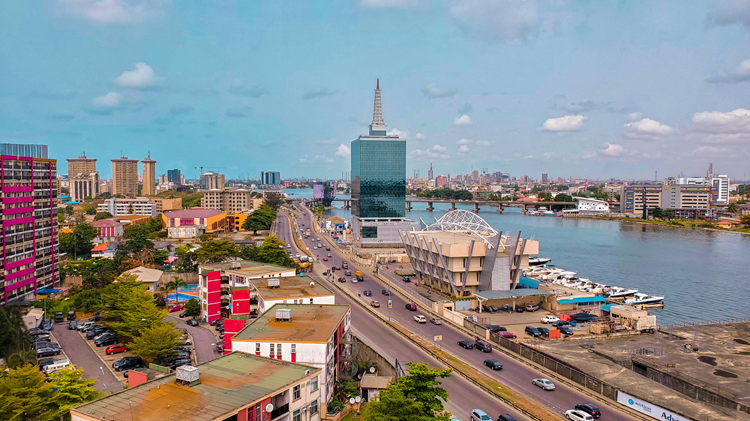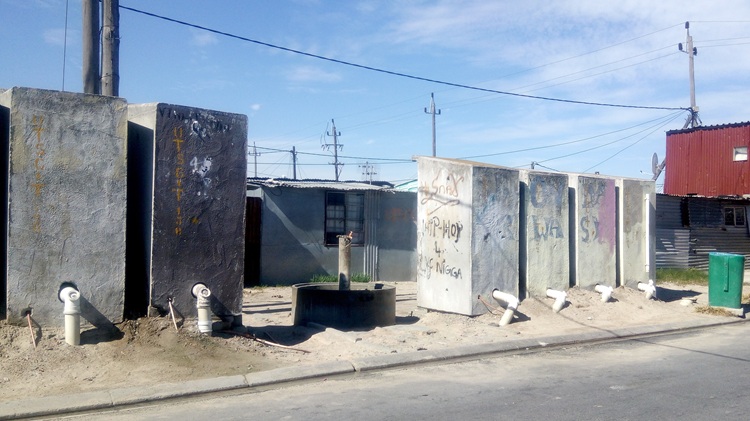Africa should brace itself for geoengineering

Radical measures to temporarily pause global heating may come with destabilising effects.
The green energy transition is gaining pace. Still, the speed of emissions reduction necessary to avoid major climate breakdown is lagging. The climate plans of large emitters mostly hinge on the massive future expansion of unproven carbon capture and storage technologies. And even if these policies are achieved — no sure thing — they put the world on a collective path toward around 2.5°C of warming above pre-industrial levels by 2100. Meanwhile, the rise of global average temperatures by 1.2°C at present is already triggering severe weather volatility much sooner than anticipated. Decarbonisation efforts are also being hindered by bottlenecks in supply chains, economic protectionism and renewed great power rivalry.
‘Humanity has opened the gates of hell,’ UN Secretary-General António Guterres warned at the 2023 UN General Assembly. Fearing the worst, many governments and non-state actors view geoengineering as a possible contingency measure. However, no one really knows what will happen if it is used. African countries have backed a movement demanding geoengineering be banned. And ideally, it will never be needed. But the continent should not be banking on that scenario.
Still mostly hypothetical, geoengineering involves man-made interventions in the atmosphere and environment to produce a swift but temporary drop in temperatures. It also promises to be very cheap compared to conventional green strategies. The cost of intervention necessary, in theory, to lower global temperatures by 0.5-1°C is between US$ 10 to 15 billion. The annual amount of spending and investment to achieve the same effect, decades from now, through scaling up existing clean energy technologies is at least US$ 4 trillion. However, once it’s deployed, the effects of geoengineering are only temporary. Unless overall emission levels are reduced, it must be maintained to avoid a “termination shock” — where temperatures spike above prior levels after the intervention wears off.
The most controversial branch is solar geoengineering, also known as solar radiation management or modification (SRM). These applications aim to mitigate global warming by blocking between 1-2% of sunlight from reaching the Earth’s surface. Proposed methods include spraying certain particles in the sky to brighten clouds or emulate the cooling effects of a volcanic eruption. More fantastical ideas suggest placing a legion of mirrors in space to bounce sunlight away from the Earth, or genetically modifying plants to have shinier leaves. Fifteen years ago, America’s energy secretary championed repainting millions of rooftops and vast stretches of pavement white. Some scientists want to preserve the reflectivity of melting arctic icecaps by blanketing them in layers of powdered glass or silicon beads, or millions of wind-powered snow blowers.

Potential placement of space mirrors to reflect sunlight away from Earth.
Image by Kyle Hiebert, created with Google Gemini.
Yet, as a so-called Plan B for global heating, SRM raises at least two major concerns. First, such environmental hacking could be an addictive distraction from creating truly sustainable economies and societies. Geoengineering may buy humanity time, but it cannot deliver a systemic shift away from carbon-intensive energy use. Second, while computer modelling and some small-scale experiments have been positive, the full effects of the technology will remain impossible to understand unless it is deployed for real at a global scale. Experts have cautioned that any manipulation of planetary weather patterns will inevitably benefit some regions more than others. This could result in a deepening of pre-existing inequalities, creating new geopolitical risks and consequences.
Solar radiation management could be an addictive distraction from creating truly sustainable economies and societies
For Africa, one study indicates SRM may aggravate local dry weather extremes, further stressing water resources. Other researchers looking specifically at West Africa suggest that if geoengineering is deployed globally by mid-century, the Sahel region could see a precipitation decrease of nearly 8.5% compared to today because of disruptions to its monsoon rains. Food production would be imperilled, along with health and security initiatives. This would be in an area that is already grappling with intertwined humanitarian crises, inter-communal conflicts and virulent terrorist threats.
Another study from 2022 warns that by cooling the tropics, SRM might reduce malaria risk in high-elevation populations in East Africa. By contrast, lowland populations across the whole of Sub-Saharan Africa would be more at risk. Other anticipated impacts include biodiversity loss and uneven sea-level rise. The accumulation of sulfate particulate matter in the atmosphere would almost certainly reduce air quality, resulting in more respiratory disease deaths and related public health issues.
In essence, many of the suspected outcomes of solar geoengineering mirror the same impacts forecasted for more advanced stages of climate change. The difference is that lowering the “global thermostat” may relegate these consequences to certain areas — rather than making them universal, as runaway climate change would. This may ultimately incentivise affluent nations to embrace the practice as a credible alternative to drastically curtailing their emissions.
Indeed, there is evidence this may already be happening. Solar geoengineering has been basically prohibited since governments reached a deal at the 2010 UN Convention on Biological Diversity to ban any applications of SRM aside from limited scientific research. But that pact is fraying.
An influential independent scientific advisory body to the US government recommended in March 2021 that America create a multilateral research programme to examine the potential of SRM. The Biden administration released a report in June 2023 saying it had no plans to launch such an umbrella program, although the report did acknowledge that SRM might hold future value. Several different US federal agencies already have related projects in development.
By late 2023, The Economist declared that solar geoengineering had now entered mainstream thinking among policymakers and technocrats. The number of private foundations offering funding for research has exploded. In February this year, at the UN Environment Assembly in Nairobi, the executive director of the UN Environment Programme opened up the conference by calling for a ‘global conversation on SRM.’ In a repeat from 2019, delegates from Switzerland led the sponsorship of a resolution to create an expert working group to evaluate the risks and benefits of SRM and its underpinning technologies.
Not everyone agrees. An African bloc in conjunction with Mexico, Columbia and others derailed the Swiss resolution, criticising it as a step that would weaken the moratorium on the use of SRM. In 2022, hundreds of scientists issued an open letter calling for an international non-use agreement on solar geoengineering that prohibits it from benefitting from public funding, patent registration, experiments or support in international forums. That call has since been endorsed by thousands of civil society groups, as well as governments in Africa and elsewhere.
However, the prospects for a non-use treaty on solar geoengineering are shrinking. At least 50 countries are already using weather-modifying technology, led by China and the Gulf States. Some campaigners and critics of SRM have thus pivoted to highlighting how a decades-old obscure UN treaty might provide the legal basis to restrict the use of SRM. Forged during the Cold War in reaction to America’s indiscriminate use of cloud-seeding technology to flood battlefields in Vietnam, the Convention on the Prohibition of Military or Any Other Hostile Use of Environmental Modification Techniques has been ratified by 78 countries. Among them are key powers China, Russia and the United States.
Either way, Africa must prepare for a more volatile climate future. For a region that is disproportionately reliant on smallholder farming, this should motivate greater public and private investment in agriculture — specifically the adoption of more drought-resistant crop strains — alongside food storage facilities, better weather monitoring systems and desalination plants. Mechanisms for conflict de-escalation, disaster response and aid delivery should also be strengthened.
African countries, individually and collectively, might also want to re-examine whether it is in their interests to become more flexible on precautionary efforts to understand SRM. Its risks are apparent, yet proponents of SRM maintain there is an ethical imperative to explore it as a last-ditch strategy that might suspend global heating long enough for more aggressive climate policies to take hold. This may be a morally dubious argument; it also might not be wrong.
African leaders, businesses, and civil society groups should continue to loudly advocate for global carbon pricing schemes and other urgent climate actions in multilateral forums
In the meantime, African leaders, businesses, and civil society groups should continue to loudly advocate for global carbon pricing schemes and other urgent climate actions in multilateral forums. No amount of due diligence and superficial optimism around SRM should displace climate change mitigation and adaptation from becoming the dominant economic and social paradigm of the 21st century. Unless that happens, geoengineering will not avert climate catastrophe either.
Image: TheDigitalArtist/Pixabay






